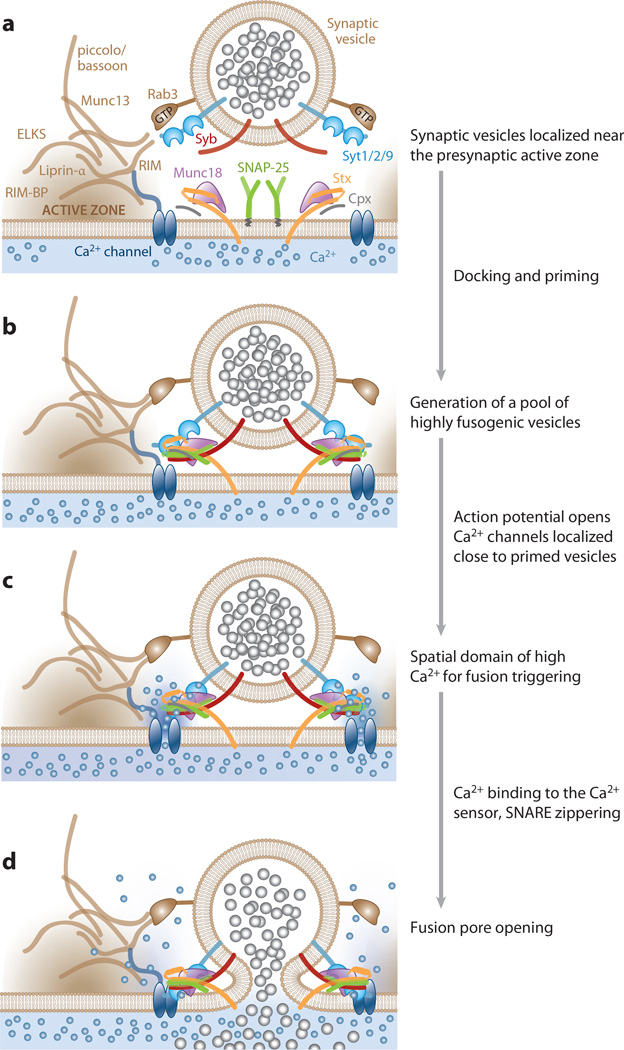Figure 3.
Schematic of mechanisms for synchronous release of neurotransmitters at central nervous synapses. The four mechanisms are (a) tethering of synaptic vesicles close to presynaptic, voltage-gated Ca2+ channels at specialized sites for release; (b) rendering vesicles release ready during priming under the control of active zone molecules Munc13 and RIM, which may involve partial assembly of SNARE complexes; (c) action potential–induced, brief opening of voltage-gated Ca2+ channels to allow for a sharp rise and decay of Ca2+ near vesicles; and (d) fast binding of Ca2+ to the synchronous Ca2+ sensor synaptotagmin 1 to trigger fusion of synaptic vesicles. The sensor also needs to have a fast off-rate for limiting high release rates to a few hundred microseconds. These steps synchronize release, and asynchronous release and spontaneous release may mechanistically differ in one of these four steps. Abbreviations: Cpx, complexin; ELKS, protein rich in the amino acids E, L, K, and S; RIM, Rab3-interacting molecule; RIM-BP, RIM-binding protein; Stx, syntaxin-1; Syb, synaptobrevin 2 (also termed VAMP2); Syt1/2/9, synaptotagmin 1, 2, or 9.

